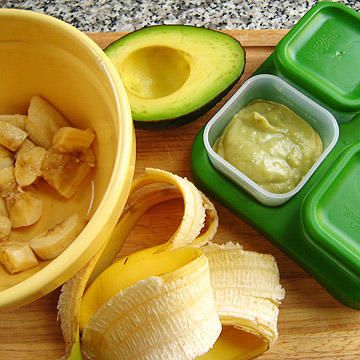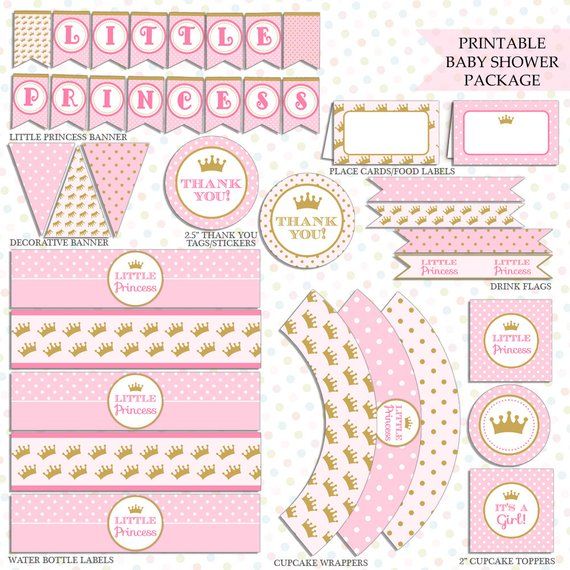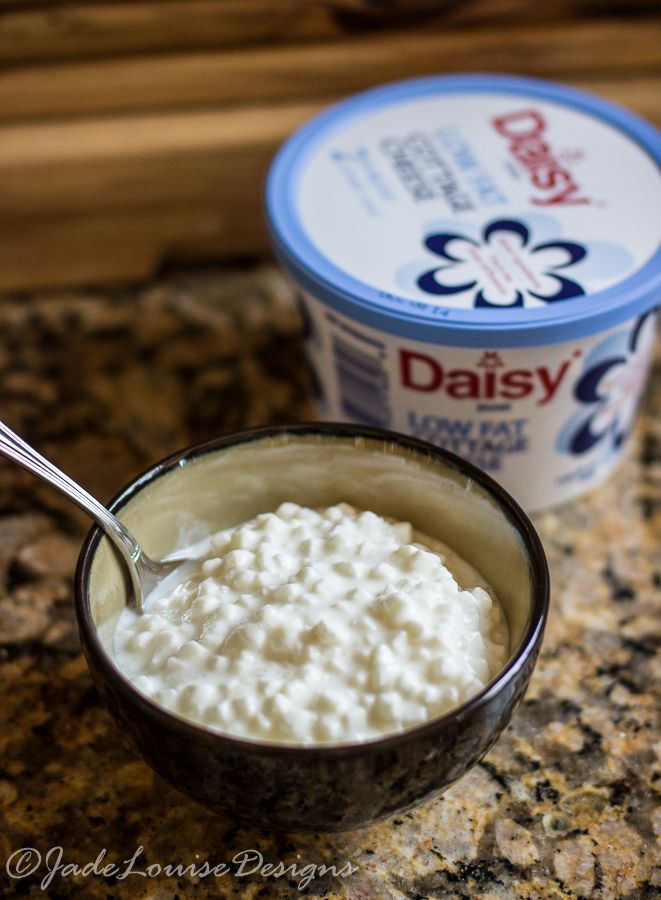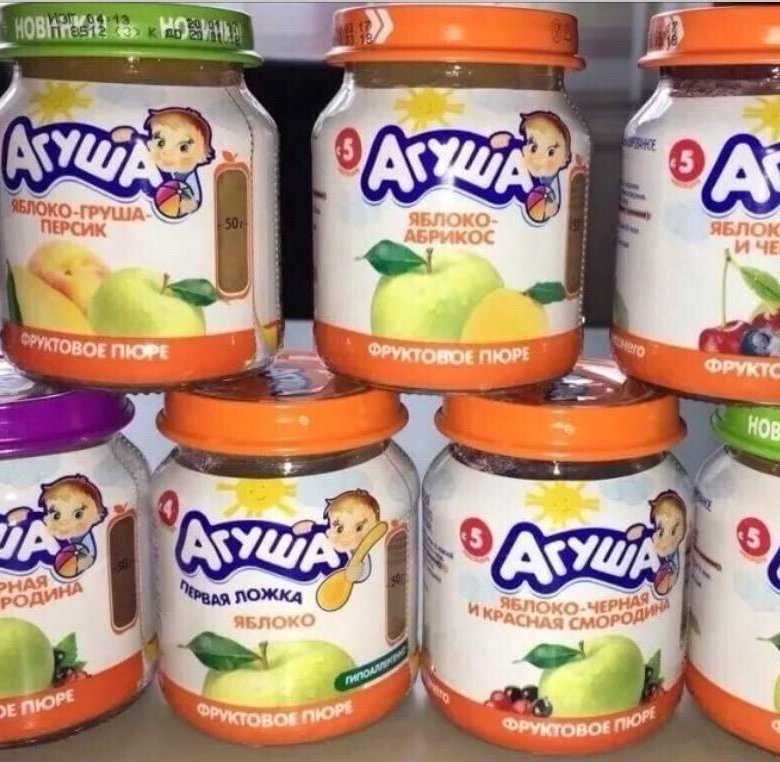Baby food avocado mixed with
Tasty Avocado Baby Food Combinations
These simple avocado baby food recipes are lip-smacking good
By Sarah Prager
Avocado baby food offers a nutritious first step in solid foods for babies. To begin with, avocados contain 20 vitamins and minerals, including folate, potassium, iron, zinc, and vitamins A, C, E, and K, plus several variants of vitamin B. In addition, avocados are packed with protein, fiber, and healthy fats without no cholesterol or sodium. Avocados are very low in saturated fat, too. Babies need omega-3 fatty acids to promote brain and eye development, and avocados are one of the fattiest plant foods that are a great source of oleic acid, an important omega-3 that’s also found in olive oil.
Contents
- Easy, fun-flavored yummy avocado/fruit puree
- Super nutritious, avocado/green vegetable puree
- Crispy, easy-to-grab coated avocado slices
- Vitamin-packed avocado/banana smoothie
- Avocado baby food and sweet potato puree
- Delicious avocado blueberry muffins
- Protein Power avocado/egg puree
- How early can avocados be introduced to baby?
Conveniently, avocados are also soft and easy for babies to gum and swallow. They’re simple for busy parents and caregivers to mash with a fork or puree in a food processor. Plus, avocados are easy to combine with other healthy foods for simple baby foods. So, which avocado baby foods should you make at home? Here are seven simple recipe ideas for your little one to enjoy that are a snap to make.
Easy, fun-flavored yummy avocado/fruit puree
For a quick avocado baby food meal, puree avocado in a food processor or small blender with a sweet fruit, and your baby will gobble it up. Here are some fruits that make a tasty combination with avocado:
- Banana
- Apple
- Pear
- Kiwi
- Pineapple
- Strawberry
With these purees, as with any baby food purees, you can add water, breast milk, or formula to change the consistency. Avocados are rather firm and will make a whipped consistency, but if you add liquid, the puree will thin out. The thinner the consistency, the easier the puree is for a baby to swallow. There isn’t any need to cook avocados, but with harder fruits like apples, you may want to steam them first before pureeing.
There isn’t any need to cook avocados, but with harder fruits like apples, you may want to steam them first before pureeing.
You can also alternate the amounts of each ingredient as needed. You can add one whole avocado in with half an apple of steamed slices with a little water, or you could throw in one to 10 strawberries, depending on what you find your baby prefers. The avocado to fruit ratio is totally up to you and dependent on what baby likes.
Super nutritious, avocado/green vegetable puree
Go green with this tasty and healthy avocado/veggie puree. These vegetables make nutritious and delicious combo purees with avocado:
- Peas
- Broccoli
- Kale
- Spinach
- Asparagus
Just like the fruit purees, you can add liquid to change the consistency and play with the ratio to find the combination your baby likes best.
Crispy, easy-to-grab coated avocado slices
If you’ve ever tried serving your baby raw avocado, you know it’s very slippery. However, cutting the avocado into slices allows babies to grasp and feed themselves, helping to develop fine motor skills. Moreover, you can coat the slices in a breadcrumb mixture made of crumbled baby crackers, puffs, or wafers to make the slices easier to hold. It also makes good use of the dust at the bottom of the puffs container.
However, cutting the avocado into slices allows babies to grasp and feed themselves, helping to develop fine motor skills. Moreover, you can coat the slices in a breadcrumb mixture made of crumbled baby crackers, puffs, or wafers to make the slices easier to hold. It also makes good use of the dust at the bottom of the puffs container.
Vitamin-packed avocado/banana smoothie
Of course, you can DIY any smoothie recipe, but here are a few avocado combos perfect for a nutritious smoothie for baby:
- Avocado, banana, spinach, and yogurt
- Avocado, banana, blueberries, and baby oatmeal
- Avocado, banana, mango, and peach
- Avocado, banana, and strawberries
Mix and match all you want to find that perfect avocado/banana smoothie your baby loves. Pop it all in the blender with your choice of liquid (water, breast milk, or formula) and you’re done! You can add flax or chia seeds to any of these recipes for extra nutrition or maple syrup for a touch of sweetness.
Avocado baby food and sweet potato puree
Sweet potatoes are cheap, naturally sweet on the little one’s taste buds, and easy to cook and puree. After you cook two cups of diced sweet potatoes, mix them with the pulp of one avocado in a blender. Then, add one cup of water at a time, until you get the thickness of the puree you’re looking for.
Delicious avocado blueberry muffins
If you’re ready to get more complex, go all out by baking avocados into muffins using this recipe. You’ll get 36 mini muffins that store in a Tupperware container on the counter for a week. This one is best for older babies who can chew beyond purees. They’re great for toddlers too.
Protein Power avocado/egg puree
For this nutrition powerhouse meal, add a hard-boiled egg (never serve raw or undercooked egg to a baby) to a half of an avocado with a tablespoon of water (or breast milk or formula) and blend. For even better consistency, add only the hard-boiled yolk to the mixture and set the hard-boiled whites aside for another recipe.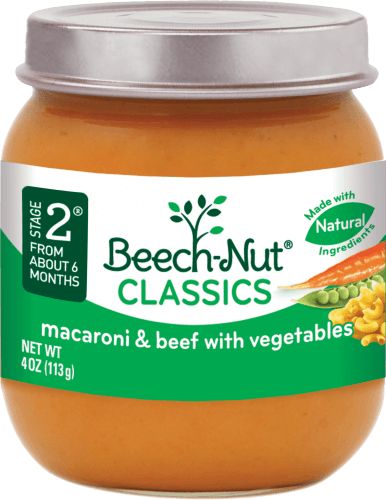
How early can avocados be introduced to baby?
You can give your baby their first taste of avocado right around the six-month milestone. It’s around the same time that you’ll be introducing fruits, vegetables, and solid foods other than rice cereal.
Feeding a baby raw, mashed avocado is certainly a good introductory food, but with these combinations, you’ll be enhancing the flavors and increasing the nutrition, all while helping to avoid a picky eater by giving a diversity of tastes in each meal. An avocado can freeze for up to a month before losing its nutritional value and taste, so store the extra puree in ice cube trays and defrost as needed. Since avocados can turn brown so quickly, freeze them right away if you’re not going to serve them immediately. Don’t forget to sneak yourself a taste while you’re cooking. Avocados are a healthy pick for adults too.
Editors' Recommendations
- 5 winter crafts for kids to make when they’re bored and stuck indoors
- 6 creative and delicious meals to make with your holiday leftovers that’ll please the whole family
- Some babies want to be held while sleeping: Here’s why
- 6 of the best toddler cereals to offer your child that aren’t packed with sugar
- How to stop food obsession in children
11 Tasty And Easy-To-Make Avocado Baby Food Recipes
Nutritious avocado preparations make it easier to include the fruit in your baby's balanced diet.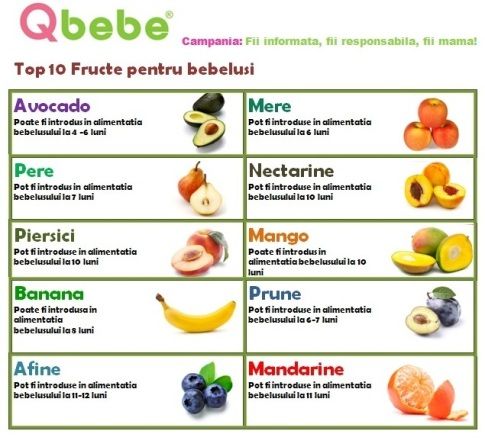
Research-backed
MomJunction believes in providing reliable, research-backed information to you. As per our strong editorial policy requirements, we base our health articles on references (citations) taken from authority sites, international journals, and research studies. However, if you find any incongruencies, feel free to write to us.
Image: Shutterstock
Avocado is frequently used in baby foods because of its creaminess and easy-to-process pulp. Additionally, you may wish to introduce several avocado baby food recipes because they are high in essential nutrients, such as vitamins, minerals, and a balanced quantity of fats, all of which are important for a growing infant.
Many parents wonder whether avocado can be given as the first food to a baby who has just started eating solids. This article discusses various aspects of avocado for babies and provides the finest avocado-based baby food recipes.
When Can Babies Have Avocado?
Avocado can be the first food for your baby, which means you can feed an infant avocado at the age of six months (1). While the creamy texture comes from fat, it is a “good” fat, and is vital for the baby’s growth. Avocados are also packed with several other vital nutrients for the infant.
While the creamy texture comes from fat, it is a “good” fat, and is vital for the baby’s growth. Avocados are also packed with several other vital nutrients for the infant.
Related: 7-Month-Old Baby's Food: Solids, Food Chart And Recipes
Health Benefits Of Avocado For Babies
Your baby reaps the following health benefits when he eats avocado:
- Keeps the nervous system healthy: Avocado contains more folic acid (also called folate or vitamin B9) than many other fruits. Folic acid is essential for the healthy development of the nervous system, including cognitive abilities of the brain. Regular consumption of avocado can act as a nervous system tonic for your little one (2).
- Provides good fat for growth: The fat found in avocados consists of monounsaturated fatty acids, which help the body grow and stay healthy. It means you can feed your baby an avocado every day without worrying about him becoming overweight (3).

Related: Are Fat Babies Healthy And When Is It A Concern?
- Good for gross motor skills: An avocado has more potassium than a banana (4). A healthy intake of potassium is essential for proper functioning of the skeletal muscles (5). The health of the skeletal muscles, in turn, determines the progress of the gross motor skills.
- Boosts immunity: Avocados contain several micronutrients and vitamins. The fruit is rich in vitamin B6 that is vital for maintaining healthy immunity, which in turn protects the infant from a host of illnesses (6) (7).
- Improves eye health: Avocado is rich in antioxidants lutein and zeaxanthin that accumulate in the eyes and improve vision. These antioxidants also help protect the eyes from degenerative effects of the ultraviolet rays from sunlight (8).
Related: When Can Babies See Clearly And Their Vision Development
Nutritional Value Per 100g Of Avocado
| Nutrient | Unit value per 100g |
|---|---|
| Energy | 160kcal |
| Carbohydrates | 8.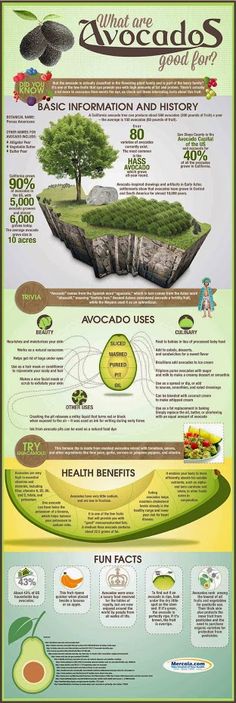 53g 53g |
| Natural sugars | 0.66g |
| Fiber | 6.7g |
| Protein | 2g |
| Fat | 14.66g |
| Calcium | 12mg |
| Iron | 0.55mg |
| Magnesium | 29mg |
| Phosphorus | 52mg |
| Potassium | 485mg |
| Sodium | 23mg |
| Manganese | 0.142mg |
| Copper | 0.19mg |
| Zinc | 0.64mg |
| Selenium | 0.4µg |
| Fluoride | 7µg |
| Vitamin C | 10mg |
| Vitamin B1 (Thiamin) | 0.067mg |
| Vitamin B2 (Riboflavin) | 0.13mg |
| Vitamin B3 (Niacin) | 1.738mg |
| Vitamin B5 (Pantothenic acid) | 1.389mg |
| Vitamin B6 | 0.257mg |
| Vitamin B9 (Folate) | 81µg |
| Choline | 14.2mg |
| Vitamin A | 7µg |
| Vitamin E | 2. 07mg 07mg |
| Vitamin K | 21µg |
Source: United States Department of Agriculture (9)
Now, let’s understand how you could choose the best avocados.
How To Select And Store Avocados?
Selection: Avocados you buy in the market are often unripe. While it is okay for adults, babies will probably not like the slightly bitter taste of the unripe fruit.
- The best way to check if an avocado is ripe is to gently press it in the palm of your hand. A ripe avocado will feel firm, but yield a bit to the pressure from the hand (10). An unripe avocado will feel palpably hard, and an overripe one will crack or burst open when pressed.
- Choose avocados that have a dark green skin and a rough and bumpy feel.
- Observe the pulp once you cut an avocado at home. The pulp of a ripe avocado is light green and gets yellowish-green around the skin of the fruit.
Storage: It is best to consume sliced avocados fresh since the pulp is rich in fat and could be susceptible to bacterial degeneration.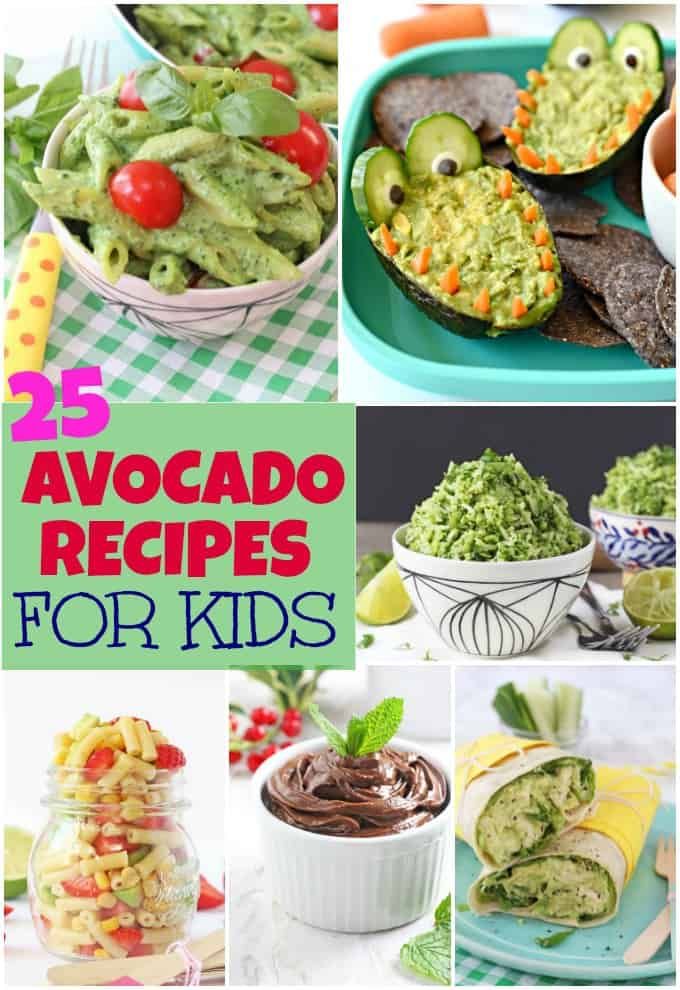
If you intend to store some sliced avocado, then turn it into puree, pour the puree into an ice cube tray, and freeze it (11). Consume it within a couple of days by thawing the fruit before eating.
Fresh fruit should be your first option since even the frozen avocado puree can lead to loss of nutrients.
Selecting and storing avocados is easy. And, in the next section, we tell you how to cook avocados for your baby.
How To Process Avocados For Baby Food?
Avocados are best eaten raw. Just like bananas, you remove the peel of the avocado and eat the pulp. Boiling or direct heating can make oils in the avocado pulp taste unappealing (12). However, you can bake and grill an avocado. You can also process the raw pulp for baby food. Here are the different ways to process avocados for babies:
- You can grill avocados either on a conventional charcoal grill or in an oven. Cut the avocado into two, remove the seed, and cut the fruit lengthwise into thin slices.
 Grill the slices for three minutes. If you intend to cook in an oven, then preheat the oven to 400ºF (200ºC). Place the avocado slices on an oven grill and grill for ten minutes.
Grill the slices for three minutes. If you intend to cook in an oven, then preheat the oven to 400ºF (200ºC). Place the avocado slices on an oven grill and grill for ten minutes.
- To bake, cut the avocados the way you want – either slices or small chunks. Preheat the oven to 425ºF (218ºC). Bake the avocado for 20 minutes.
- Scoop out the pulp on a plate and use a fork to mash it. You can feed mashed pulp to the baby without any further processing.
- Pureeing the fruit is easy. Transfer the scooped pulp into a blender, add some water, and blend it till you attain a desired consistency.
- You can blend avocado with baby formula to add flavor to it.
Now, let’s take a look at a few recipes that use the above techniques of cooking the fruit.
Amazing Avocado Baby Food Recipes
Avocado makes an excellent accompaniment to several food items, thanks to its creamy texture and taste.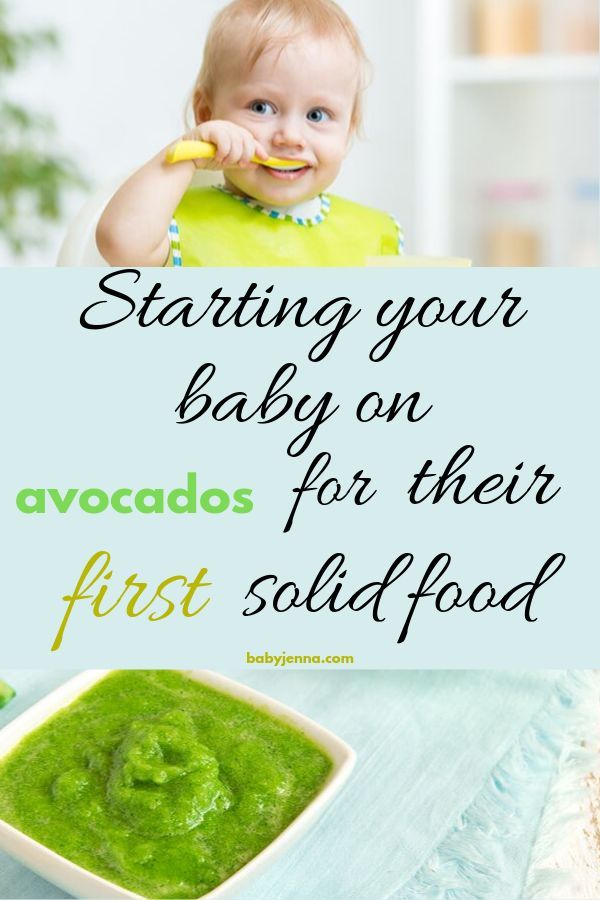 Here are 11 delicious avocado baby food recipes.
Here are 11 delicious avocado baby food recipes.
1. Pear and avocado puree
Image: Shutterstock
The subtle sweetness of pear compliments the creamy texture of the avocado pulp to make a delicious combination in this fruit puree.
You will need:
- 1 pear
- 1 avocado
- 1-2 cups water
How to:
- Slice out the avocado pulp. Chop the pear into smaller pieces.
- Transfer it to a blender. Add water, and blend.
- To thicken the puree add a bit more avocado pulp and to thin it, add some water.
2. Avocado and banana mash
Image: Shutterstock
The sweetness of banana meets the creaminess of avocado to make this fruity dessert for your little one.
You will need:
- 1 banana
- 1 avocado
How to:
- Put the avocado pulp and the banana in a bowl. Mash them together with a fork.

- Add some water if the mixture gets mushy, or you can also add some formula milk.
- Once the mashed fruits attain desired consistency, the dish is ready to be served.
3. Sweet potato and avocado puree
Image: Shutterstock
Sweet potato goes well with avocado to make a nutritional baby food that naturally tastes sweet.
You will need:
- 2 cups diced sweet potato
- 1 avocado
- 4 cups of water
How to:
- Transfer the sweet potatoes into a cooking vessel along with water. Boil the sweet potatoes for 25 minutes. You can also pressure cook them for four whistles.
- Sieve out the sweet potatoes from the water and let it cool. Transfer the pulp of the avocado into a blender and add a cup of water.
- Add the boiled sweet potatoes to the blender and blend them. Pour more water if required and combine till you achieve the desired consistency.
4.
 Mango and avocado puree
Mango and avocado puree Image: Shutterstock
You can combine the delicious tropical fruit with avocado to either make a puree or smoothie.
You will need:
- 1 mango
- 1 avocado
- 1 cup water
How to:
- Peel the mango and scoop out the pulp into a blender. Add the avocado pulp as well.
- Add some water and blend them till desired consistency.
- You can also add formula milk instead of water to make it into an avocado mango smoothie.
5. Chicken and avocado puree
Image: Shutterstock
Combine the protein-rich chicken with the good fat of avocado to make an avocado meal for your baby.
You will need:
- 1 1/2 cups of boneless chicken pieces
- 1 avocado
- 4-5 cups of water
How to:
- Boil the chicken for 25 minutes on medium flame or pressure cook it for up to four whistles from the cooker.

- Let the chicken cool. Do not discard the stock (the chicken water).
- Scoop out the pulp of avocado into the blender. You can add the pulp directly or bake it in an oven at 425ºF (218ºC) for 20 minutes.
- Transfer the avocado and the chicken, with its stock, into a blender.
- Blend until the chicken and avocado have adequately mixed.
6. Carrot and avocado puree:
Image: iStock
Carrots are rich in vitamins thus making this combination of avocado and carrots an excellent multi-vitamin meal for an infant.
You will need:
- 1 cup diced carrots
- 1 avocado
- 3-4 cups of water
How to:
- Cook the carrots by boiling them in water for 20 minutes on a medium flame. You can also pressure cook it for three steam whistles.
- Cool the carrot with the stock.
- Transfer avocado pulp into a blender, add the carrots and the stock and blend till you achieve the desired consistency of the puree.

7. Peas and avocado mash
Image: Shutterstock
Mashed peas and avocado should surely be a green, delight packed with protein from peas and healthy fats from avocado.
You will need:
- 1 1/2 cups peas
- 1 avocado
- 2 cups of water
How to:
- Boil the peas for 25 minutes or pressure cook for up to three steam whistles.
- Sieve out the peas and let them cool. Do not discard the peas stock yet.
- Add the avocado pulp and the cooked peas in a bowl. Mash them together. If the mixture seems too thick, then add some peas stock to soften it.
8. Avocado and formula smoothie
Image: Shutterstock
If you love avocado smoothie yourself, then you can prepare some for your baby as well.
You will need:
- 1 medium-sized avocado
- 2-3 spoon formula
- 5-6 cups of water
How to:
- Slice the avocado into half, remove the seed, and use a spoon to scoop out the soft pulp.
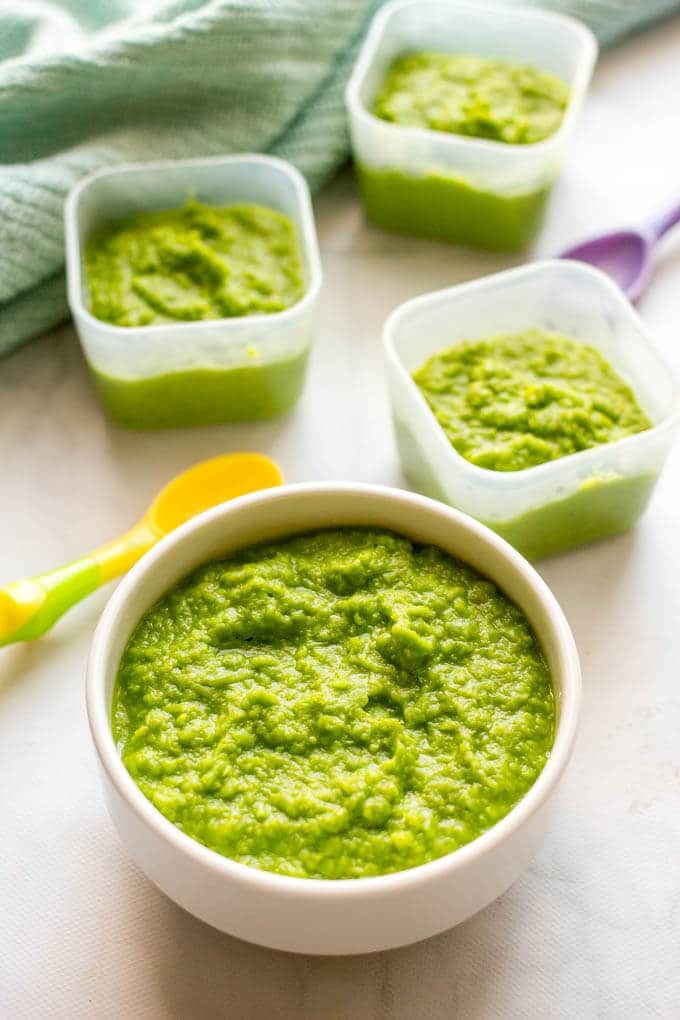
- Transfer the pulp to a blender, add water, and formula to it. Do note that you can refer the back label of formula carton for the precise quantity of formula powder needed for a cup (236ml) of formula milk.
- Once you have all the ingredients in the blender, blend them. Pour into a cup and serve to the baby right away.
9. Apple and avocado puree
Image: Shutterstock
Apples go well with avocado and the two pack a lot of nourishment together for a healthy nutrition of your infant.
You will need:
- 1 apple
- 1 avocado
- 2-3 cups of water
How to:
- Chop the apple into smaller pieces and retain its skin since it contains a lot of nutrients.
- Transfer the apples to a cooking vessel with water to just submerge the apples. Cook for 25 minutes on medium flame.
- Let the apples cool along with the water.
- Add the avocado pulp into a blender and transfer the apple pieces with the water.
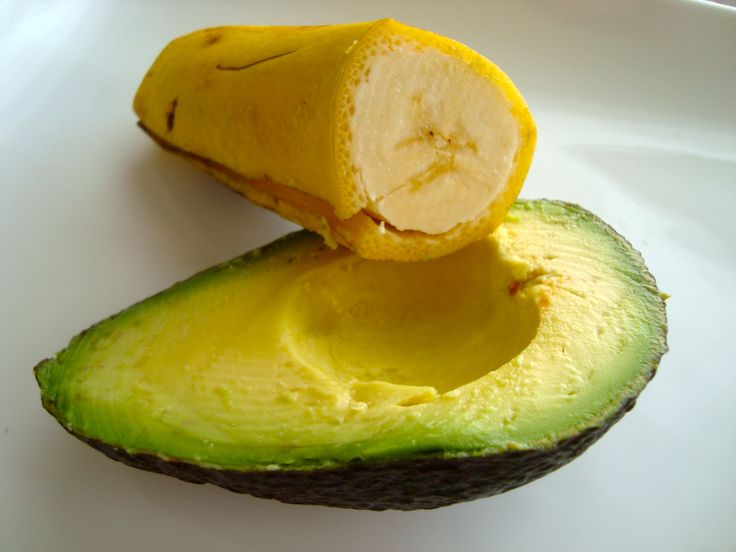
- Blend the avocados and apples finely together.
10. Avocado yogurt
Image: Shutterstock
A baby should not have cow’s milk before the age of 12 months, but it is okay to give yogurt. The American Academy of Pediatrics (AAP) states that processed dairy products such as yogurt can be introduced into a baby’s diet after six months and preferably in combination with a fruit or vegetable (13). It means you can combine avocado and yogurt to make a tasty treat for your little one.
You will need:
- 1 1/2 cup whole cow’s milk yogurt (preferably homemade)
- 1 avocado
How to:
- Transfer yogurt to a blender and the avocado pulp to it.
- Blend till the avocado pulp entirely mixes with the yogurt.
- If the mixture seems thick, you can add a little water during the blending process.
11. Frozen avocado cubes
Image: Shutterstock
It makes an excellent avocado baby food for the hot summer months.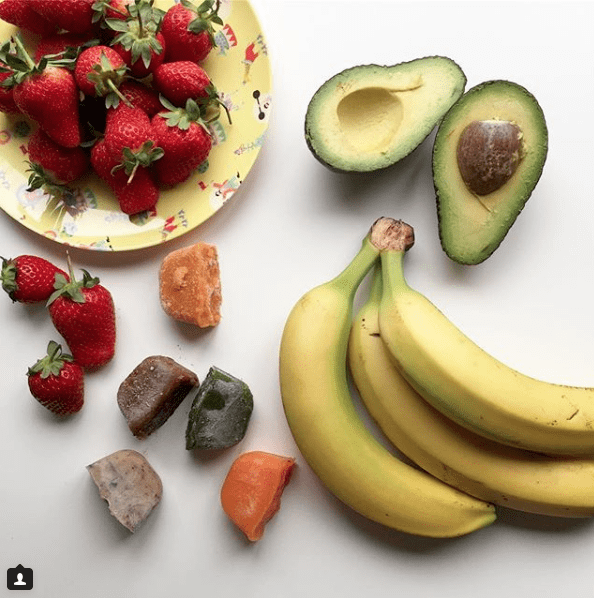
You will need:
- 3 avocados
- 4 cups of water
How to:
- Transfer the fruit pulp and water into a blender, and blend till it makes a very thick puree.
- Pour the puree into ice cube tray and freeze for an hour. The cubes must feel squishy and should not get too hard.
- Once ready, transfer to a plate and serve it to your toddler with another fruit such as with banana or you could even serve with yogurt.
In addition to the above recipes, you may feed avocado in combination with other fruits.
Avocado Baby Food Combinations
You can combine avocado with the following foods to make the most delicious baby food recipes:
- Fruits with innately sweet pulp such as bananas and mango taste the best with avocados. You can combine other fruits of your choice since avocado tastes good with almost any fruit.
- Make your baby’s formula interesting and flavorful with a dash of avocado.
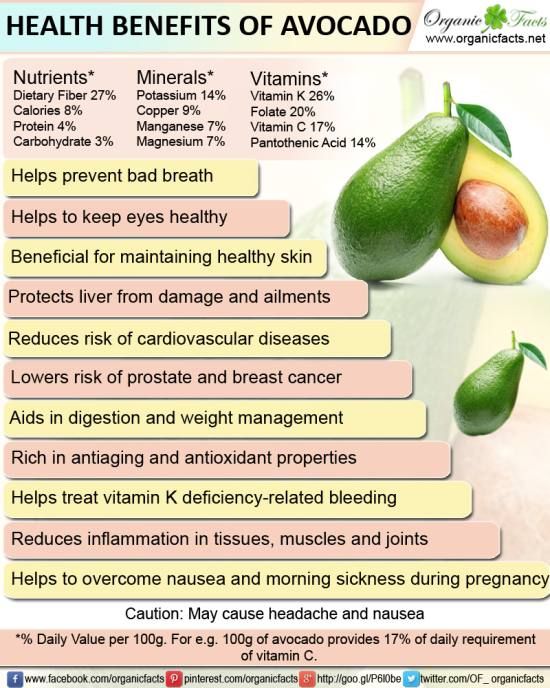
- Yogurt will undoubtedly taste the best for an infant when combined with avocado.
- You can combine avocado with meat to bring that creamy texture to meat purees.
Avocado is a wonderful fruit that packs a lot of nourishment. But it might be unsuitable to some infants.
Can A Baby Be Allergic To Avocados?
Yes. Infants can be allergic to avocado, and skins hives (medically called urticaria) is the most common symptom of avocado allergy. Other symptoms of avocado allergy are diarrhea, vomiting, nausea, swelling of the face, and drowsiness.
If your infant is allergic to banana and melon, then do not feed avocado as infants with allergies to these fruits are 90% likely to be allergic to avocado. If your baby has other allergies or allergic conditions such as asthma and eczema, then you can delay the introduction of avocados up to the age of nine months (14).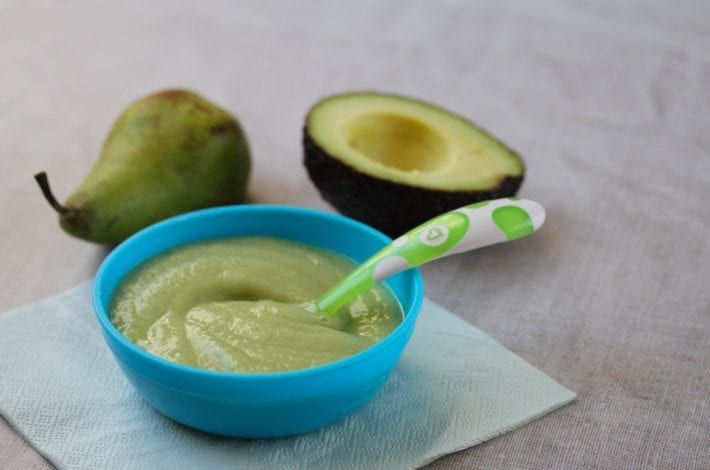 You should also consult a pediatrician before introducing the fruit. In any case, be alert to the signs of avocado allergy in the baby.
You should also consult a pediatrician before introducing the fruit. In any case, be alert to the signs of avocado allergy in the baby.
You may have some more questions about the avocado fruit, and we address those queries in the section below.
1. Can my baby eat avocado every day?
Yes. Avocados can be a part of your baby’s daily diet. There is no limit to how much avocado he can eat. But, do not overfeed! Just make it a part of the regular diet.
2. Should I select organic avocados for my baby?
Yes, you can, but it is not always necessary. According to experts, avocados are among fruits that are least likely to be contaminated by pesticides and are mostly free of any harmful chemical residue (15). It means the avocado you pick at a supermarket is safe for your baby.
3. Can I use avocado oil for baby food?
Yes. However, feeding it to your baby in the fruit form is a better option. Avocado oil provides a fraction of nutritional benefits that a whole fruit does.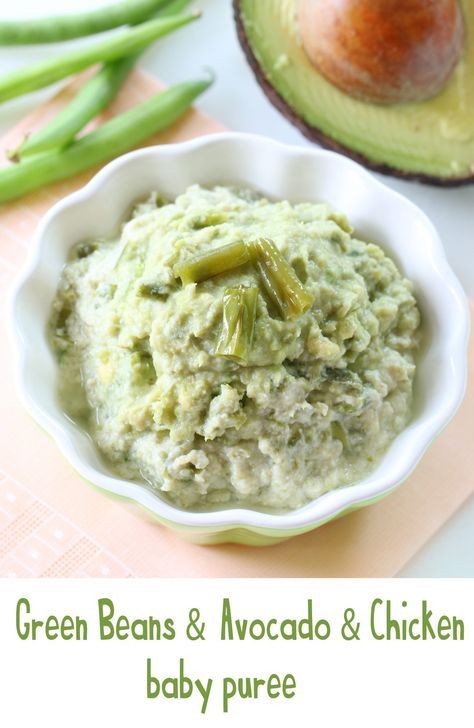 Therefore, avocado fruit is healthier for your baby. You can still use avocado oil when shallow-frying vegetable pieces for your baby’s finger food. It is to be noted that the avocado oil is more expensive than other oils and buying fruit offers better value in terms of money and nutrition for your baby.
Therefore, avocado fruit is healthier for your baby. You can still use avocado oil when shallow-frying vegetable pieces for your baby’s finger food. It is to be noted that the avocado oil is more expensive than other oils and buying fruit offers better value in terms of money and nutrition for your baby.
4. Does avocado cause gas in babies?
Yes, but only in small amounts. Every food produces gas in the gastrointestinal tract. It is only when the gas causes discomfort to an infant that the food becomes a concern. Pediatric experts state that avocado produces normal quantities of gas in the gastrointestinal tract of a baby. It means, it is tolerable and does not cause any problems to the infant (16).
5. Do avocados lead to constipation in infants?
There is no scientific evidence to prove that avocado can cause constipation. In fact, pediatric experts recommend avocado to treat constipation, as the fruit contains moderate level of fiber, which eases bowel movement (17).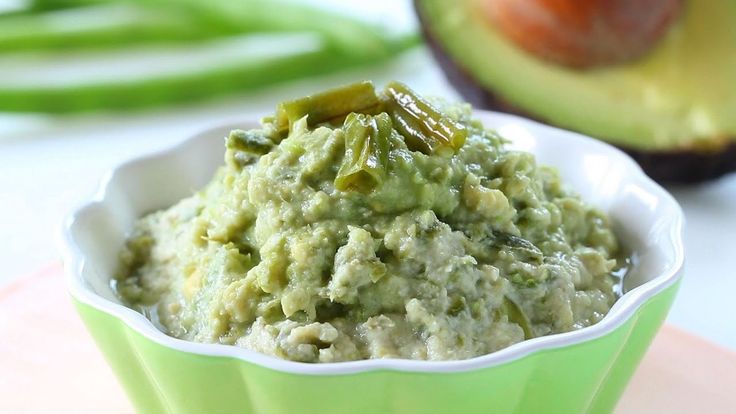
Avocado is rich in protein, calcium, magnesium, healthy fat, and other nutrients. It is a good choice for babies over six months. You may offer them avocados in baked, grilled, or pureed forms. Its creamy and soft texture also allows you to create delicious avocado baby food recipes such as avocado and banana mash or mango and avocado puree. So, if your baby is not allergic to avocados, feed them the fruit daily to keep their nervous system healthy, help develop gross motor skills, and boost immunity.
References:
MomJunction's articles are written after analyzing the research works of expert authors and institutions. Our references consist of resources established by authorities in their respective fields. You can learn more about the authenticity of the information we present in our editorial policy.
- Introducing solid foods.
https://www.islingtoncs.org/sites/default/files/Introducing%20solid%20foods.pdf - Avocado seen as a super fruit.

https://universe.byu.edu/2013/10/31/avocado-a-super-fruit/ - The truth about fats: the good the bad and the in-between.
https://www.health.harvard.edu/staying-healthy/the-truth-about-fats-bad-and-good - Avocados;
https://www.hsph.harvard.edu/nutritionsource/avocados/ - Potassium in diet.
https://medlineplus.gov/ency/article/002413.htm - The Amazing Avocado.
https://bastyr.edu/news/health-tips/2011/09/amazing-avocado#gsc.tab=0 - 3 Vitamins That Are Best for Boosting Your Immunity.
https://health.clevelandclinic.org/3-vitamins-best-boosting-immunity/ - Are Avocados Good for You?
https://www.consumerreports.org/nutrition-healthy-eating/are-avocados-good-for-you-a2536502660/ - Avocado raw.
https://fdc.nal.usda.gov/fdc-app.html#/food-details/1102652/nutrients - Please squeeze the avocado!
https://medical.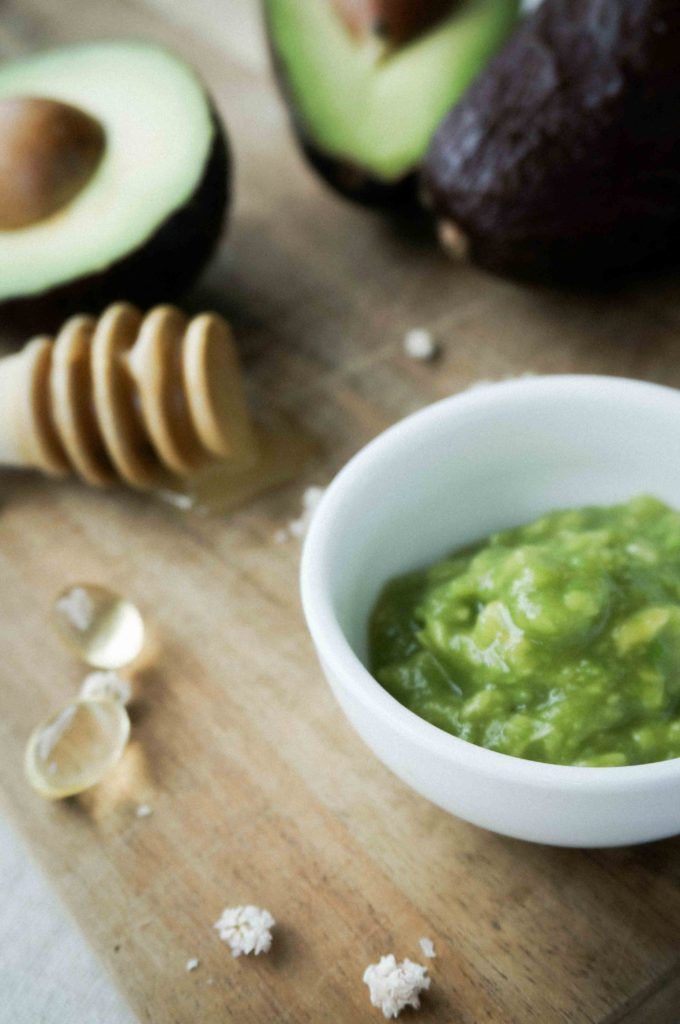 mit.edu/ask-lucy/2009/08/please-squeeze-avocado
mit.edu/ask-lucy/2009/08/please-squeeze-avocado - Homemade or From the Jar: Which Baby Food Is Best?
https://health.clevelandclinic.org/from-the-jar-or-blender-which-baby-food-is-best/ - Avocados.
https://www.fondation-louisbonduelle.org/en/vegetable/avocado/ - When can I start giving my baby peanut butter?
https://www.healthychildren.org/English/tips-tools/ask-the-pediatrician/Pages/When-can-I-start-giving-my-baby-peanut-butter.aspx - CPMC Food Allergy Care.
https://www.sutterhealth.org/cpmc/services/allergy/food-allergy - EWG’s 2022 Shopper’s Guide to Pesticides in Produce.
https://www.ewg.org/foodnews/summary.php - Helpful hints for controlling gas (flatus).
https://www.med.umich.edu/fbd/docs/Gas%20reduction%20diet.pdf - Constipation.
https://www.urmc.rochester.edu/encyclopedia/content.aspx?contenttypeid=90&contentid=P01986
The following two tabs change content below.
- Reviewer
- Author
Rohit Garoo did MBA from Osmania University and holds a certificate in Developmental Psychology from The University of Queensland. The zoologist-botanist turned writer-editor has over 8 years of experience in content writing, content marketing, and copywriting. He has also done an MBA in marketing and human resources and worked in the domains of market research and e-commerce. Rohit writes topics...
View Profile ›
Huda Shaikh did her graduation in Microbiology and postgraduation in Clinical Nutrition and Dietetics from SNDT University. Through her private practice, NutriBond, she advocates healthy diets for weight loss. Huda is also a health and fitness blogger and conducts workshops on nutrition and fitness.
8 Health Benefits Of Raw And Soaked Almonds During Pregnancy
8 Health Benefits Of Raw And Soaked Almonds During Pregnancy
Top 15 Healthy Recipes For Pregnant Women
Top 15 Healthy Recipes For Pregnant Women
Smoked Salmon In Pregnancy: Is It Safe, Types And Risks
Smoked Salmon In Pregnancy: Is It Safe, Types And Risks
Ginger And Breastfeeding: Safety, Benefits And Ways To Include It
Ginger And Breastfeeding: Safety, Benefits And Ways To Include It
Chamomile Tea For Babies: Benefits, Dosage And Side Effects
Chamomile Tea For Babies: Benefits, Dosage And Side Effects
Drinking Tea During Pregnancy: What Are Safe & What Are Not
Drinking Tea During Pregnancy: What Are Safe & What Are Not
How Safe Is Acai Berry During Pregnancy
How Safe Is Acai Berry During Pregnancy
9 Wonderful Benefits Of Consuming Almond Milk During Pregnancy
9 Wonderful Benefits Of Consuming Almond Milk During Pregnancy
5 Wonderful Health Benefits Of Pesto During Pregnancy
5 Wonderful Health Benefits Of Pesto During Pregnancy
from what age and how much?
› ›
In our country, avocado (the second name is American Perseus) is not particularly popular, but some mothers are still interested in whether it is possible to give it to a child. Let's try to answer this question, based on the experience of children's nutritionists abroad.
Photo: Depositphotos.com. Author: StephanieFrey.
Until the age of 6 months, the baby's body is not able to cope with any solid food on its own. The only thing that is allowed to feed such a crumb is breast milk and adapted milk formulas.
But even if your child has grown to complementary foods, do not rush to introduce avocados into his diet. You need to start with more traditional vegetables and fruits.
Content
- Age range
- Nutritional value
- Starting with puree
- How to choose?
- When not to give
Age limits
You can start introducing your baby to avocado after one year.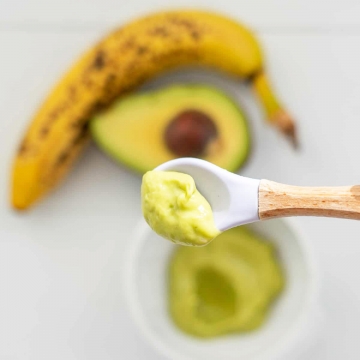 Although some especially advanced parents give this fruit puree to their children as a first meal. In foreign forums, disputes about this do not subside. But it's better to play it safe.
Although some especially advanced parents give this fruit puree to their children as a first meal. In foreign forums, disputes about this do not subside. But it's better to play it safe.
Nutritional value
The fruit is highly nutritious, rich in vitamins A, C and B, minerals and healthy omega-3 unsaturated fats, chemically close to whole milk. Such fats are useful for the development of children's brains.
Free from sodium and cholesterol.
Contains: folic acid, dietary fiber, potassium, iron and vitamin E, carotenoids: lutein and beta-carotene. There is more potassium in green fruits than in 45 other vegetables and fruits used for complementary foods.
Another indisputable plus: light, unobtrusive taste and delicate texture. This combination will appeal to many kids.
Starting with puree
Fruit pulp can be used to make a light, creamy puree that is easy for a child to chew and swallow.
If the fruit is ripe enough, simply peel it and mash it with a spoon.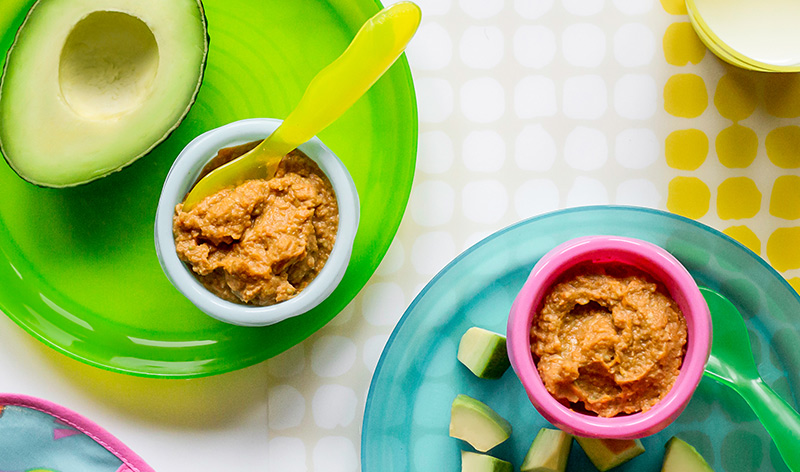 Boiling and steaming is not necessary. Using a food processor or blender will result in a thinner consistency.
Boiling and steaming is not necessary. Using a food processor or blender will result in a thinner consistency.
Avocado is combined with other fruits and vegetables, so it can be used in the preparation of multi-ingredient purees. Traditional companions: apple, peach, pear, banana and yogurt. But carrots, beets and spinach contain nitrates, so before introducing them into the children's diet, you need to talk with a pediatrician.
Follow the general rules for introducing complementary foods. After the first acquaintance of the baby with a new product for him, you must wait 3 days to make sure that there is no allergy.
To reduce stress on the baby's digestive system, the first puree of avocados is recommended to be mixed with breast milk or infant formula.
How to choose?
- When choosing avocados for baby food, pay attention to their density. Too hard fruits are unripe. Too soft speak of overripeness, which means that rotting has already begun in their pulp.
 Look for the golden mean.
Look for the golden mean. - Fruit with green skin is preferred over dark purple skin.
- The flesh should be green at the break and gradually change to yellow-orange near the stone.
- Fruit does not tolerate refrigeration or freezer storage, so use only fresh fruit to feed your baby.
When not to give
Avocados, like bananas, should not be eaten if a child has a latex allergy. If you don't know if your baby is allergic to latex, ask your pediatrician.
The frequent contamination of avocados with pesticides may prevent the use of avocados in baby food. In the US, nutritionists recommend buying organic fruits, but there is no clear division in our markets yet.
Is it possible for a child to have mango?
Share with friends:
Author: Yakusheva Tatyana
Avocado baby food recipes | 2022
Avocados are considered a great first food for a baby because each fruit (yes, avocados really are a fruit!) contains many beneficial nutrients for baby's health and well-being. Avocado puree for kids has a natural creamy taste and a mild flavor that makes it perfect. No complicated equipment is needed to make avocado baby food, just a few simple kitchen tools and you're done!
Avocado puree for kids has a natural creamy taste and a mild flavor that makes it perfect. No complicated equipment is needed to make avocado baby food, just a few simple kitchen tools and you're done!
Avocado Health Benefits Avocado for baby is a smart choice because one serving of avocado baby food is high in essential vitamins, minerals and healthy fats that are valuable for baby's growth and development.
When can children eat avocados? Because avocado has a mild flavor and creamy texture, it may be one of the first foods given to a child. Avocado baby food is usually recommended as the first baby food because of its nutrient dense properties, smooth taste, and ease of preparation. Avocado baby food can be given when the baby is at least 4 months old.
How to make avocado baby food
How to choose a ripe avocado? When buying ripe avocado baby food fruits, choose one with a dark, firm surface that is slightly soft to the touch. Avoid overly hard or overly soft avocados. If you can't find a perfectly ripe avocado, choose a firmer one and leave it at home in a brown paper bag for a day or two. Forget high-tech gadgets for this avocado baby food recipe. There is no need to cook, steam, or mix in this method of making baby avocados. All you need is a few common kitchen tools.
Avoid overly hard or overly soft avocados. If you can't find a perfectly ripe avocado, choose a firmer one and leave it at home in a brown paper bag for a day or two. Forget high-tech gadgets for this avocado baby food recipe. There is no need to cook, steam, or mix in this method of making baby avocados. All you need is a few common kitchen tools.
Photo: Karen Beaton-Cohen
Step 1 of How to Make Avocado Baby Food: Using a sharp knife, cut a ripe avocado in half and remove the hole.
Photo: Karen Beaton-Cohen
Step 2 of How to Make Avocado Baby Food: Using a spoon, scoop out the flesh of the avocado into a bowl.
Photo: Karen Beaton-Cohen
Step 3 of how to prepare avocado for baby food for the first feeding: mash the avocado until smooth without slices, using the back of a fork or potato press. If you want to dilute the consistency of avocado baby food, add a small amount of breast milk or formula. Continue adding liquid and puree until you reach your desired consistency. When you first feed avocado baby food (4 to 6 months of age), the mixture should be smooth and watery, reminiscent of breast milk. When a baby is 6 to 8 months old, avocado baby formula can be thick and creamy, with the consistency of yogurt.
If you want to dilute the consistency of avocado baby food, add a small amount of breast milk or formula. Continue adding liquid and puree until you reach your desired consistency. When you first feed avocado baby food (4 to 6 months of age), the mixture should be smooth and watery, reminiscent of breast milk. When a baby is 6 to 8 months old, avocado baby formula can be thick and creamy, with the consistency of yogurt.
Photo: Karen Beaton-Cohen
Step 4 of How to Make Avocado Baby Food for an Older Child: For the avocado finger food, cut the flesh of the avocado into bite-sized pieces (half-inch cubes) on a cutting board and immediately give.
Can you freeze avocado baby food?
It is absolutely safe to freeze pureed avocados, but you have to take into account the color change along with a slight change in texture when the meat is exposed to air. If you have added breast milk or formula to your avocado baby food puree, do not freeze it.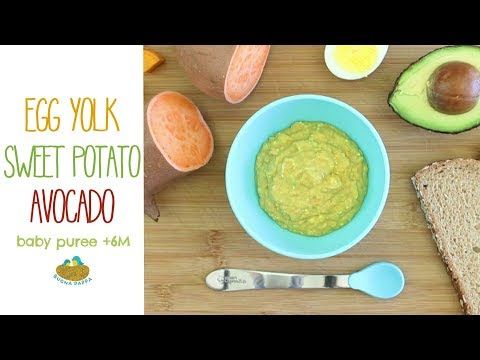 After defrosting avocado baby food, add liquids. If frozen, use avocado baby food within one month.
After defrosting avocado baby food, add liquids. If frozen, use avocado baby food within one month.
Avocado Baby Food Recipes
Once you have established that your child is not allergic to eating avocados or other fruits, there are different options for baby avocado puree. Below are three of our favorite avocado baby food recipes.
Avocado and Apple Baby Food Recipe
In a bowl, prepare avocado baby food by cutting it in half, removing the well and mashing it in a bowl until smooth. Add 1/2 cup homemade natural applesauce. Mix well and dilute, using breast milk or formula if desired.
Avocado Pear Baby Food Recipe
In a bowl, prepare avocado baby food by cutting it in half, removing the well and mashing it in a bowl until smooth. Peel two ripe pears and remove the seeds. Mash pears into avocado baby food. Mix well and dilute, using breast milk or formula if desired.
Avocado Banana Baby Food Recipe
In a bowl, prepare avocado baby food by cutting it in half, removing the well and mashing it in a bowl until smooth.